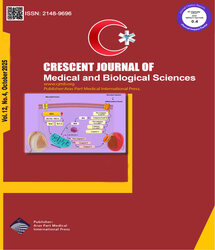

| Original Article | |
| Histological Study of the Placenta in Neonates With Intrauterine Growth Retardation | |
| Hossein Mohammad Alizadeh Fard1, Fatemehe Afshari1, Zahra Ghatre Samani2 | |
| 1Department of Histopathology, Tabriz Branch, Islamic Azad University, Tabriz, Iran 2Department of Gynecology, Tabriz Branch, Islamic Azad University, Tabriz, Iran |
|
|
CJMB 2016; 3: 107-110 Viewed : 4244 times Downloaded : 3991 times. Keywords : Fetal growth retardation, Fibrosis, Gestational age, Placenta |
|
| Full Text(PDF) | Related Articles | |
| Abstract | |
Objective: Placenta is the maternofetal contact zone, provided by normal membranes and endometrium, for which the intrauterine fetal life depends on. Regarding the importance of placenta in embryonic period, this study aims at investigating the histopathological changes of placenta in newborns with intrauterine growth retardation (IUGR). Materials and Methods: This study was performed on two groups (control and experimental) of pregnant women with IUGR fetus in the Histological Department of Medical School of Azad University, Tabriz. In the experimental group, 30 samples of IUGR placentas were examined. The samples were first fixed in formalin, embedded in paraffinized mold, and cut into 5 μm sections. After that, the samples were prepared for staining with Hematoxylin and Eosin (H&E), trichrome, and PAS techniques. Results: Findings showed the increase of syncytial knots and fibrinoid, the presence of villous fibrosis, and decrease of glycogen deposit in the experimental group. In addition, statistical investigations suggested that placental and fetal weights in the experimental group were significantly lower than control group (P < 0.05). Conclusion: The results obtained from this study showed that fetal placental and birth weights were lower than control group. Pathological results showed increase of syncytial knots and fibrinoid in the experimental group in comparison to control group. |
Cite By, Google Scholar
PubMed
Online Submission System
 CJMB ENDNOTE ® Style
CJMB ENDNOTE ® Style
 Tutorials
Tutorials
 Publication Charge
Medical and Biological Research Center
About Journal
Publication Charge
Medical and Biological Research Center
About Journal
Aras Part Medical International Press Editor-in-Chief
Arash Khaki
Deputy Editor
Zafer Akan

















